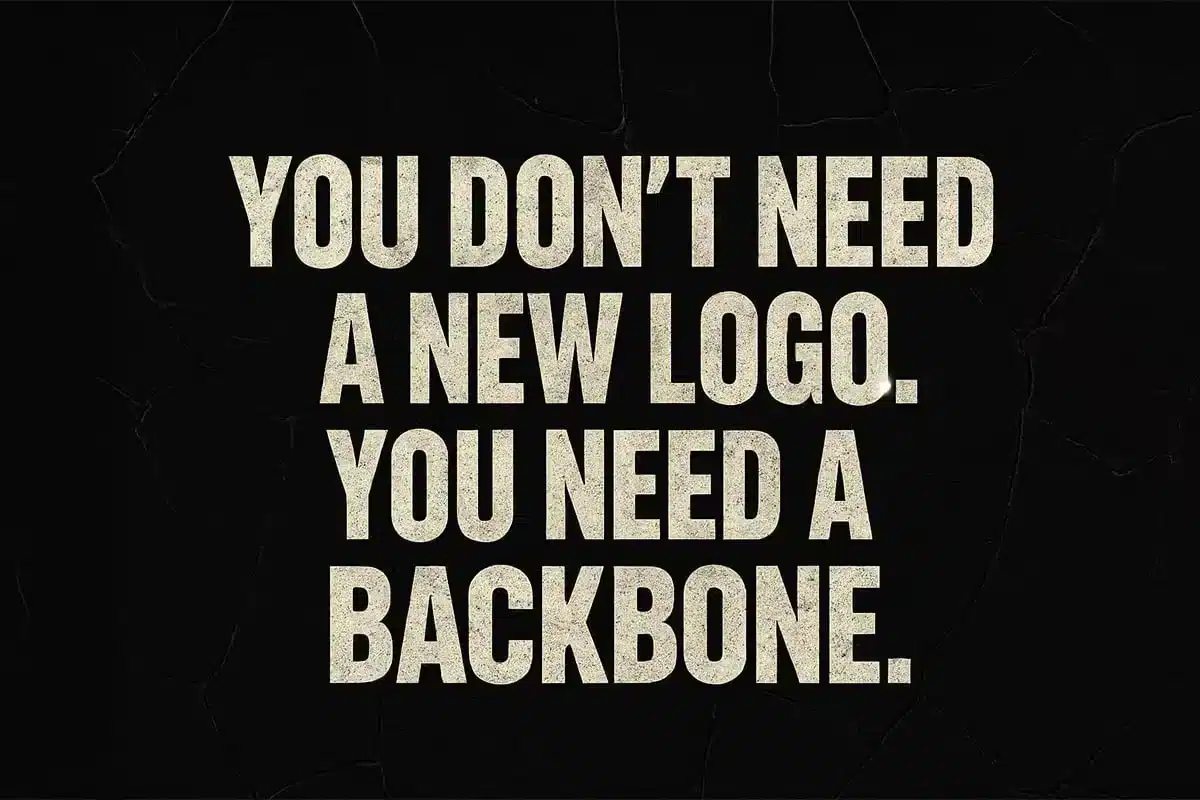Everyone’s obsessed with the why. And I get it. It’s a powerful question. It drives purpose, intention, and meaning. But here’s the cold truth: knowing your why is just the beginning. Stopping there is like drawing blueprints for your dream home and never picking up a hammer. It might look pretty on paper, but you’re still sleeping on the floor.
Over the last 30 years, I’ve worked with brands of every shape and size, from scrappy startups to corporate giants, and I’ve seen this same issue surface again and again. They workshop their purpose, polish a mission statement, slap it on a wall, maybe even drop it in a deck. But when it comes to actually living it? It falls flat.
That’s because they’ve never operationalized their brand.
What the hell does that even mean?
It means taking your brand off the whiteboard and putting it into motion. It means creating real systems, behaviours, and checkpoints that ensure your brand isn’t just an idea but a living, breathing part of your company. It means making your brand measurable, actionable, and undeniably felt, inside and out.
Because a brand isn’t what you say you are. It’s what people experience.
Operationalizing brand is the missing link between purpose and performance. And without it, even the most inspiring vision will crumble under the weight of inconsistency.
The Brand Promise No One’s Keeping
You say you stand for innovation, but your customer service process hasn’t changed in ten years. You talk about transparency, but your team finds out about product launches through press releases. You claim to value community, but your internal culture is dog-eat-dog.
This is what happens when the brand promise isn’t reinforced by brand behaviour.
A brand promise without operational support isn’t a promise, it’s a pitch. And your audience can feel the disconnect. Trust erodes. Loyalty fades. Growth stalls.
The Brand Pillars That Hold Everything Up
To operationalize a brand, you need more than values and aspirations. You need pillars—foundational elements that hold the brand up and give it form. Not fluffy words in a slide deck, but clear, defined traits that shape everything from hiring practices to product development to how you handle a complaint.
Some of these pillars are internal: How you lead. How you communicate. How you show up as a team.
Others are external: How your product feels. How your service delivers. How your story is told.
When these pillars are defined and aligned, they create cohesion. When they’re missing, you’re left with guesswork—and a brand that feels like a moving target.
Measuring Brand Like You Mean It
Once you define your brand pillars, they become your scorecard. Suddenly, brand isn’t this abstract, artsy thing—it’s accountable. You can measure performance against your values. You can assess culture fit during hiring. You can identify breakdowns before they become brand damage.
Instead of asking “Does this feel on-brand?” (which is subjective), you’re asking, “Does this reinforce our pillars?” Now you’ve got clarity. Now your team has alignment. Now your brand can grow.
But Isn’t That Marketing’s Job?
No. And that mindset is why most brands stall.
Your marketing team can communicate your brand, but they can’t embody it for you. If your operations, leadership, and customer experience don’t reflect the same values your ads are shouting, you’re just selling stories you can’t back up.
Brand isn’t a department. It’s the connective tissue of your company. It needs to be lived in every hallway, every Slack thread, every customer call. That’s operationalization.
The Impulse Marketing Trap
Let’s talk about another elephant in the room: short attention spans and dopamine-fueled buying habits. Social media has trained us to chase clicks, likes, and impulsive conversions. We’ve become addicted to the hit of a viral campaign or a flash sale win.
But here’s the thing, impulse marketing doesn’t build brand equity.
It’s fast food. Tastes good, easy to sell, but leaves people empty. A few might come back for seconds, but they’re not sticking around for the long haul. There’s no magnetism, no depth, no story. Just noise.
Legacy brands aren’t built in the comment section. They’re built in the long game, in truth, consistency, and emotional resonance.
If your marketing outpaces your operational integrity, you’ll burn through trust faster than your ad budget.
So, How Do You Actually Operationalize Brand?
Here’s the blueprint:
- Define your promise.
What is your brand actually here to do? Not the buzzwords. The truth. - Identify your pillars.
These are the 4–6 foundational behaviours, beliefs, or experiences that hold your brand up. They should be observable, actionable, and measurable. - Audit your experience.
Go through every customer and employee touchpoint. Where are you delivering on your brand promise? Where are you falling short? - Align your teams.
Your people need to know what the brand stands for and how they’re responsible for upholding it. This isn’t a once-a-year workshop. It’s culture work. - Create accountability systems.
This might be internal scorecards, brand health checks, or even customer feedback loops. The goal is to turn intention into routine. - Reinforce relentlessly.
Operationalizing brand isn’t a one-and-done. It’s a living process. Brands don’t get strong by accident. They get strong by design.
A Brand Is Built in the Doing
You can’t say you care about people and treat your staff like shit.
You can’t promise transparency and then hide behind press releases.
You can’t talk about sustainability while shipping garbage.
If your brand only lives in your slide deck, it’s not a brand. It’s a costume.
The companies that win today are the ones who do what they say, loudly, consistently, and without compromise. They make their values tangible. They operationalize the brand so deeply, it becomes instinct.
Not every business is ready for that level of commitment.
But if you are, your customers will feel it.
And they’ll remember.
If your brand is only living on paper, it’s not a brand. Let’s change that.











0 Comments